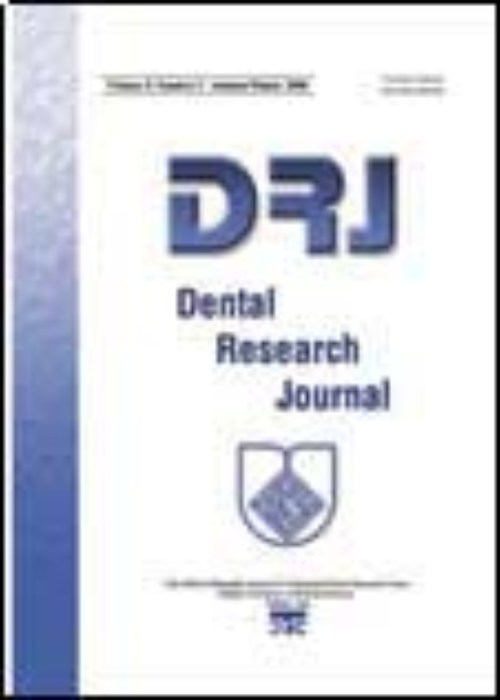Detection of Candida albicans in oral squamous cell carcinoma by fl uorescence staining technique
Author(s):
Abstract:
Background
One of the probable etiologic risk factors of oral squamous cell carcinoma (OSCC) is Candidal infection, especially by Candida albicans, whose role has not defi nitely been confi rmed. Some have assigned a primary role to Candida, whereas others consider it as a transient inhabitant. The debate may be due to lack of an accurate and sensitive revealing technique. By identifying the presence of Candida, especially in deeper parts of OSCC, the etiologic role may be verifi ed. The present study was conducted to detect the presence of Candida in OSCC by fl uorescence staining technique.Materials And Methods
This study was descriptive experimental. Calcofl uor white, which is applied in fl uorescence staining, is a specifi c staining substance for Candida and has a higher accuracy compared with other common methods. 100 specimens of well-differentiated OSCC with adequate amount of tissue were retrieved from the archive and two serial sections were obtained from each one. The fi rst section was stained using the popular histochemical (periodic acid-Schiff [PAS]) method and then evaluated under a light microscope to detect the presence of Candida. The second section was stained using fl uorescence staining technique. The sum of counted Candida in each technique was fed into SPSS software and analyzed by McNamara test. P < 0.001 was considered as signifi cant.Results
The amount of Candida present in OSCCs was 74% measured by fl uorescence technique. The sensitivity and specifi city of the two staining techniques were signifi cantly different. These parameters in the fl uorescence technique were higher than those of the histochemical (PAS) method, confi rmed by McNamara test showing signifi cantly different results for them (P < 0.001). The results obtained from the fl uorescence technique had higher accuracy compared with the histochemical (PAS) method.Conclusion
Some researchers couldn’t fi nd a considerable number of fungi in OSCC,while our results revealed more presence of Candida, especially in deeper parts of tissue samples and probably a more important role for Candida as an etiologic risk factor for OSCC. However, since the fl uorescence technique had a higher accuracy in the identifi cation of Candida and it was nearly evident in two-third of the samples, the role of fungi as a primary cause is suggested to be studied in future investigations.Keywords:
Language:
English
Published:
Dental Research Journal, Volume:12 Issue: 2, Mar 2015
Page:
115
magiran.com/p1386148
دانلود و مطالعه متن این مقاله با یکی از روشهای زیر امکان پذیر است:
اشتراک شخصی
با عضویت و پرداخت آنلاین حق اشتراک یکساله به مبلغ 1,390,000ريال میتوانید 70 عنوان مطلب دانلود کنید!
اشتراک سازمانی
به کتابخانه دانشگاه یا محل کار خود پیشنهاد کنید تا اشتراک سازمانی این پایگاه را برای دسترسی نامحدود همه کاربران به متن مطالب تهیه نمایند!
توجه!
- حق عضویت دریافتی صرف حمایت از نشریات عضو و نگهداری، تکمیل و توسعه مگیران میشود.
- پرداخت حق اشتراک و دانلود مقالات اجازه بازنشر آن در سایر رسانههای چاپی و دیجیتال را به کاربر نمیدهد.
In order to view content subscription is required
Personal subscription
Subscribe magiran.com for 70 € euros via PayPal and download 70 articles during a year.
Organization subscription
Please contact us to subscribe your university or library for unlimited access!


